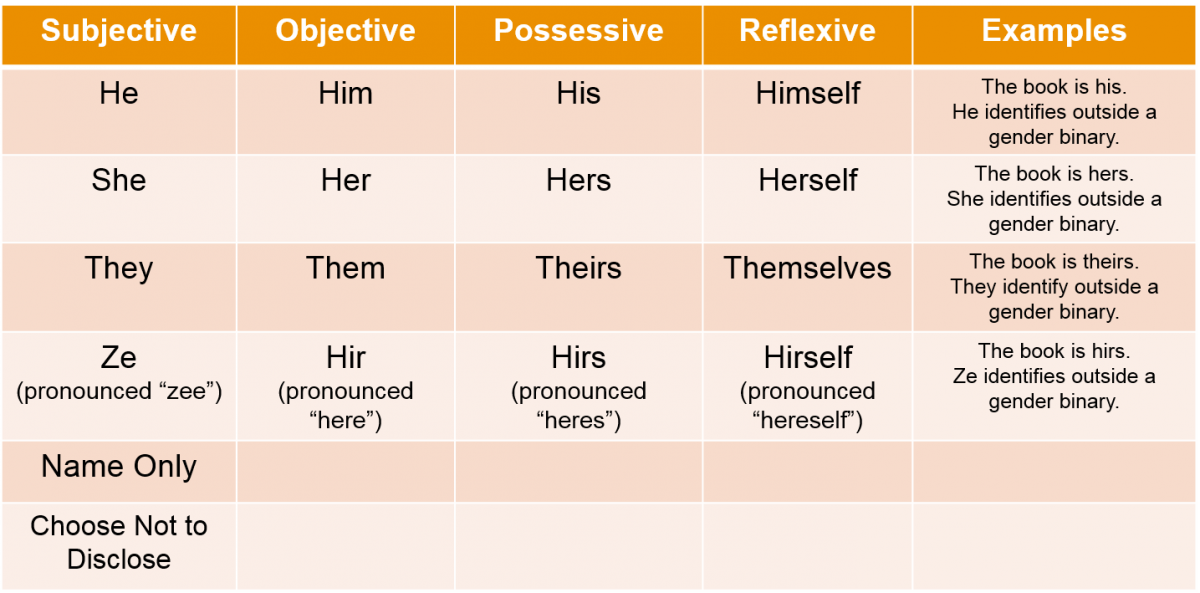

Instead, acknowledge your mistake, apologize, move on, and do better next time. Doing so puts that person in a caretaking position, where they need to soothe and reassure you, and can call unwanted attention to them. If that person corrects you directly, resist the urge to express feelings of shame or get upset. Regardless of whether or not you’re engaging with the concept of pronouns for the first time, you will likely misgender someone at some point. What should you do if you make a mistake? Some people have more than one set of personal pronouns, such as she/her/hers and they/them/theirs, and if that’s the case you can use any of those pronouns when referring to them. They’re sharing their pronouns, and those are the pronouns you should refer to them with from that point on unless they later tell you otherwise. When someone shares their personal pronouns with you, they aren’t sharing a preference. This can be a helpful way to hear someone’s pronouns and learn how to address them, but it won’t work if you’re in an environment where everyone is meeting for the first time, or you’re alone with someone. If you don’t know someone’s pronouns, and they don’t share them with you, using the more neutral they/them/theirs can be helpful.Īnother way to learn someone’s pronouns is to listen to others when they refer to the person. It’s important to remember that many trans and nonbinary people can put themselves in danger by revealing their personal pronouns. That said, not everyone is comfortable sharing their personal pronouns.

When approaching others about their pronouns it can be helpful to share your personal pronouns first, especially if you’re someone who is cisgender. How do you share your pronouns or ask others about theirs?


 0 kommentar(er)
0 kommentar(er)
